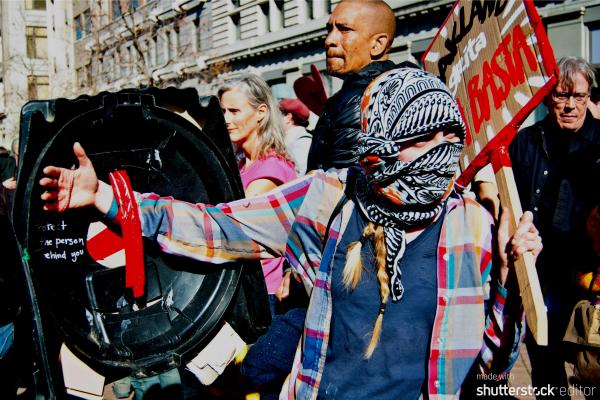FROM THE STREETS of Ferguson to Charlottesville and from Occupy to Standing Rock, anarchists represent a prominent part of today’s activist mix. How might Christians understand this tradition of political engagement?
In popular culture, anarchism is often trivialized as a cipher for generalized chaos, based on a caricature of hooded black bloc brawlers smashing store windows at protests. On the other hand, some anarchists settle for mere sloganeering, with little analysis or strategy. But simplistic stereotypes fail to recognize that, as social critic Cornel West put it, anarchism represents “a powerful critique of concentration of power in the nation-state.”
The label derives from the Greek anarchos, meaning “without rulers” (not, as some libertarians wrongly assume, without rules). Anarchists work for voluntary, nonhierarchical forms of self-organization and against state coercion and oppression.
As a social movement and ideological orientation, political anarchism began coalescing in the wake of the failed social revolutions of 1848 around Europe. Early anarchists critiqued the state as the root of all human oppression, and as the “left of the left” challenged Marxist assumptions that revolutions could only be accomplished by changing state structures from the top down. Some proposed communal self-rule and “mutual aid” as an alternative to social Darwinism.
The majority of the tradition was (and remains) decidedly atheist—“no gods, no masters.” But Pierre-Joseph Proudhon allowed that early Christianity was essentially anarchist until the church sold out to Constantine, while Peter Kropotkin argued the same about popular radical religious movements of the late Middle Ages.
Read the Full Article

